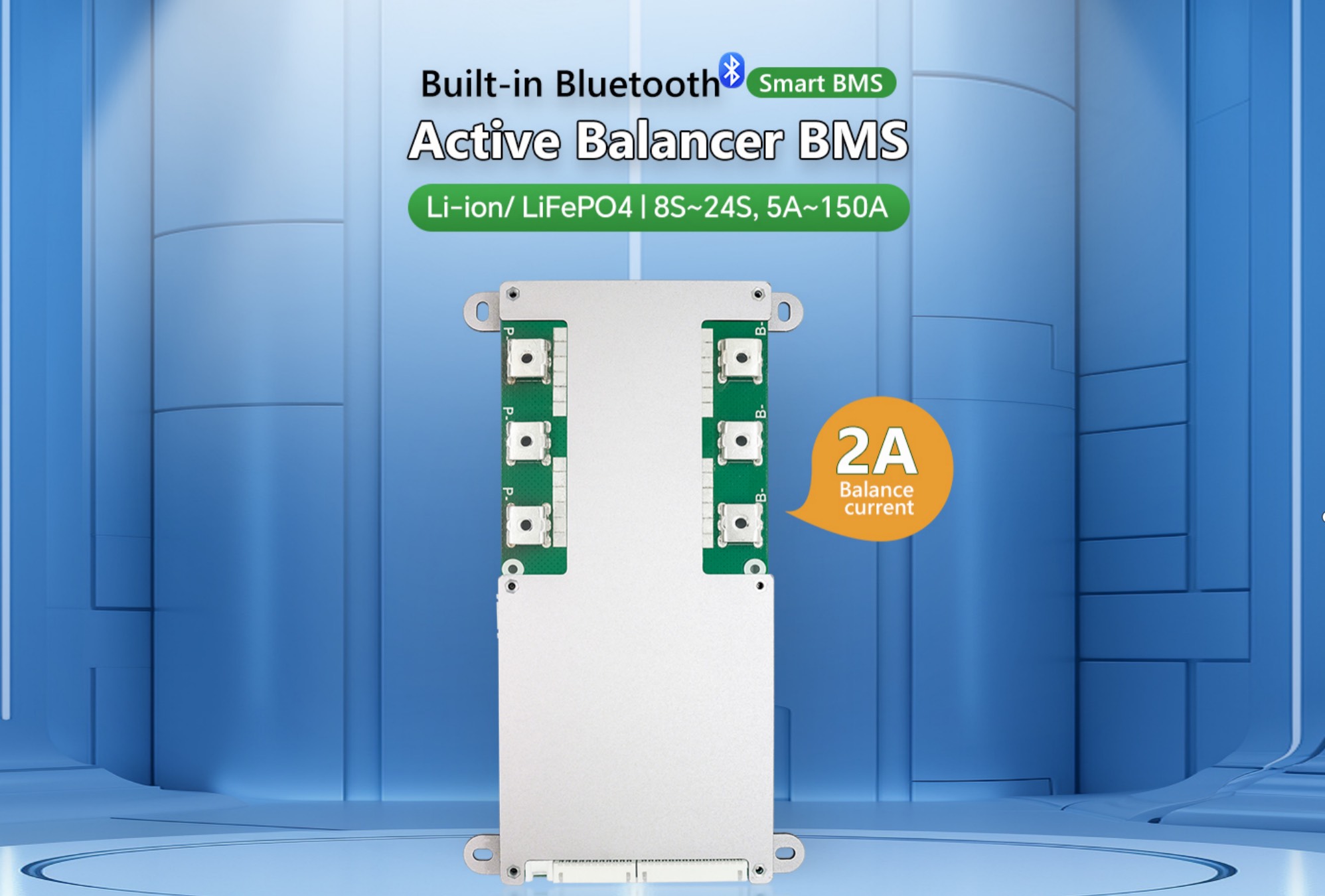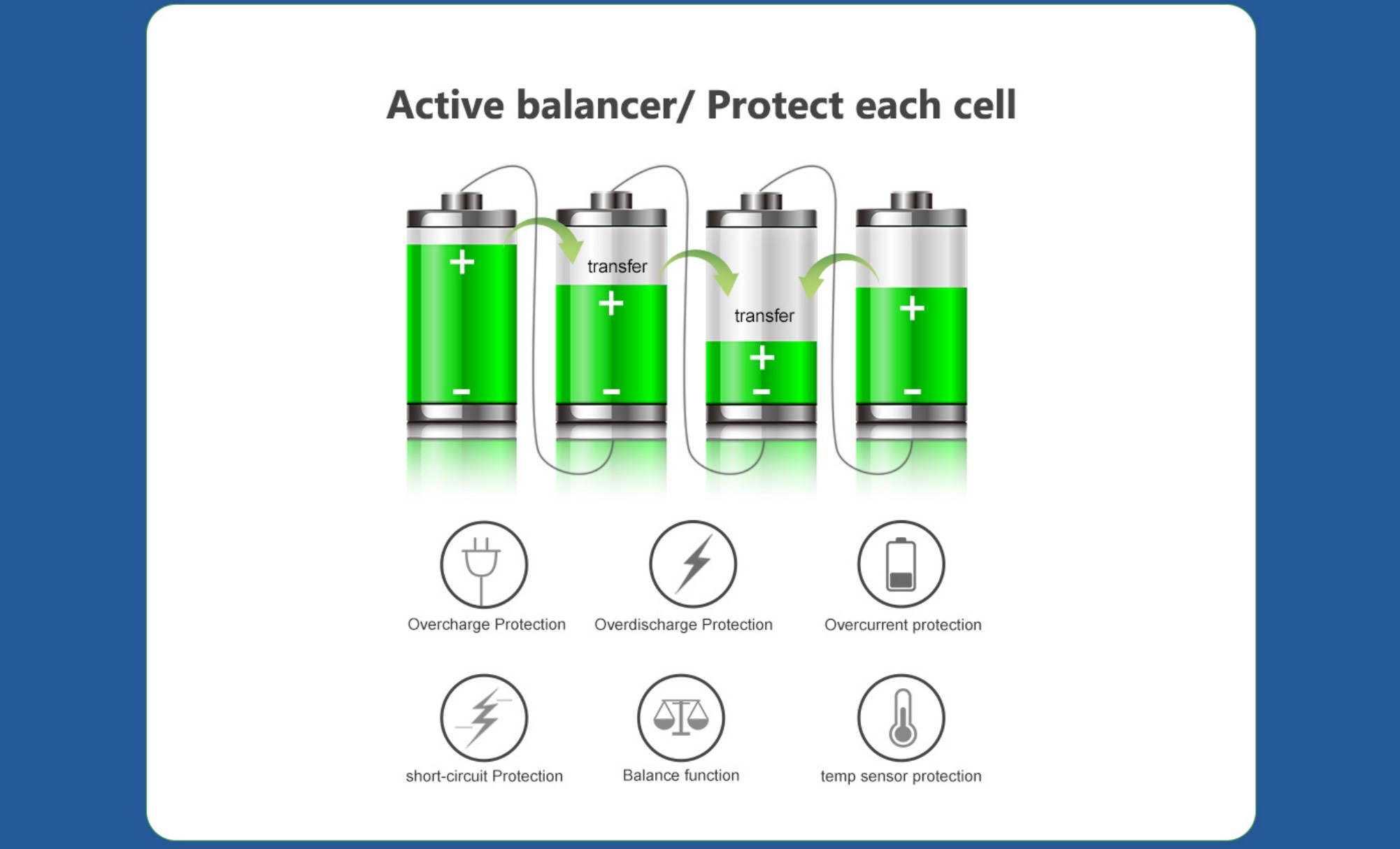Dynamic Balancing: The BMS can monitor the voltage of individual cells within the battery pack and, through controlling the flow of current, achieve a balance in charge and discharge among the battery cells, ensuring consistent state across the entire battery pack.
Real-time Monitoring: The BMS can continuously monitor parameters such as voltage, current, temperature, etc., in real-time to promptly detect and address potential issues with the battery, such as overcharging, over-discharging, or excessive temperatures.
Intelligent Management: BMS is often equipped with intelligent algorithms and control strategies, capable of adaptive management based on the operational state of the battery pack and environmental conditions, enhancing overall performance and lifespan.
Communication Capability: BMS typically includes communication modules allowing data exchange with other systems or devices, enabling remote monitoring and control.
Fault Diagnosis: The BMS can diagnose faults within the battery pack and provide corresponding alarms or protective measures to prevent damage or safety risks.
Energy Efficiency and Emission Reduction: Through efficient battery management and optimization, BMS can effectively improve energy utilization, reduce energy consumption, and contribute to energy efficiency and emission reduction goals.
Scalability: BMS systems are designed to be scalable, accommodating different scales and types of battery packs to meet the requirements of diverse application scenarios.
In summary, an intelligent active balancing BMS, through advanced monitoring, control, and management technologies, enhances the performance, safety, and reliability of battery packs. These characteristics make BMS widely applicable in areas such as electric vehicles and energy storage systems.
Electric Vehicles (EVs) and Hybrid Electric Vehicles (HEVs): Smart active balance BMS is crucial in electric and hybrid vehicles to monitor, manage, and balance the battery cells. It helps optimize the performance, extend the battery life, and ensure safe operation of the vehicle.
Energy Storage Systems (ESS): In applications like home energy storage or grid-scale energy storage, BMS plays a vital role in managing the charging and discharging cycles, optimizing energy utilization, and ensuring the overall health of the battery pack.
Renewable Energy Integration: BMS is used in conjunction with renewable energy systems, such as solar or wind power, to store excess energy in batteries. The smart balancing ensures efficient energy storage and release when needed.
Uninterruptible Power Supply (UPS): BMS is employed in UPS systems to manage the energy storage component, ensuring a reliable and stable power supply during electrical outages.
Portable Electronic Devices: In applications like laptops, smartphones, and other portable electronic devices, smart BMS helps manage and protect the battery, optimizing charging cycles and enhancing the overall lifespan.
Electric Bicycles and Scooters: BMS is used in electric bicycles and scooters to regulate and balance the charge among battery cells, improving the efficiency and safety of these electric mobility solutions.
Medical Devices: Battery-powered medical devices, such as portable diagnostic equipment or implantable devices, utilize BMS to ensure reliable and safe operation.
Telecommunication Equipment: BMS is integrated into battery packs for backup power in telecommunication systems, ensuring a consistent power supply during network outages.
Aerospace and Aviation: BMS is employed in electric or hybrid-electric propulsion systems for aircraft and drones, helping manage the energy storage components efficiently.
Marine Applications: Electric and hybrid marine vessels use BMS to monitor and manage the battery systems, optimizing energy use and ensuring safety during operation.
In essence, smart active balance BMS finds application in a diverse range of scenarios where rechargeable battery packs are used, contributing to improved performance, safety, and longevity of the batteries in various industries.
TDT-2001
is suitable for 8-24 series ternary lithium, lithium iron phosphate, and lithium titanate battery packs, with a standard discharge current of 20A/30/A40A/60A/100A/120A/150A (compatible with 5-150A).Active balancing current: 2A




By continuing to use the site you agree to our privacy policy Terms and Conditions.